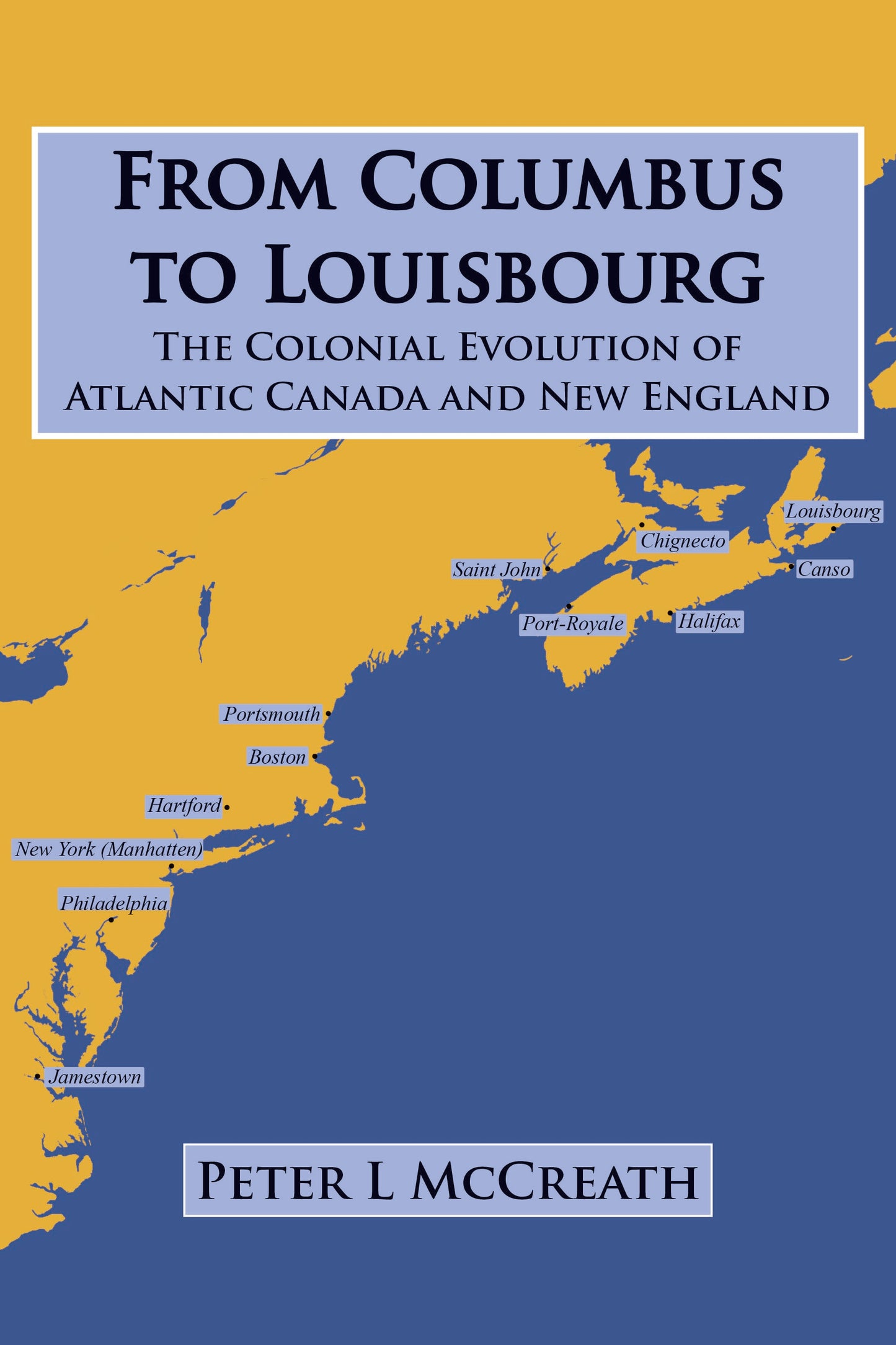Mitchell, Francis G
From Columbus to Louisbourg
From Columbus to Louisbourg
Couldn't load pickup availability
From Columbus to Louisbourg The Colonial Evolution of Atlantic Canada and New England by Peter McCreath 150 pp, 100 photo/sketches, bibliography
This book seeks to tell the interesting story, in a readable way, of how the English and the French established colonies that evolved into what has become New England and Atlantic Canada. The two experienced major differences, in particular the differing colonial approaches by the English and the French. The storyline itself follows the true history. The principal characters were real people who did what this work attributes to them. It is a story culminating in critical events during the mid-18th Century that led in no small measure to the rebellion and revolution that resulted in the American Revolution (American War of Independence), and the establishment of the independent Republic of the United States, and in due course, the establishment of what was originally called the Dominion of Canada. In due course, in 1745, New England leaders led the capture of the presumed unconquerable great French fortress Louisbourg. By so doing, and they demonstrated that American colonists could and would choose to go their own way, and soon thereafter, create their own nation. This was a strategically important event in the evolution of Canada and the United States. The idea of seeking to capture or neutralize the dominant French fortress of Louisbourg was spawned by a handful of visionary and determined business and political leaders in New England. They had decided that they had had enough of the raids on land and privateering at sea from what was, at that time the largest French harbour on the northwest Atlantic Coast; it had just become too close to home for their comfort. If officials and leaders in Britain didn’t see it as enough of a problem to do something about, so the key New England leaders decided that they would deal with it themselves. And during the spring of 1745, they did.
As the broadsheets of the day described it: “New England Bravery”: “Boston celebrates the Most Notable Feat of Arms in American Colonial History”! But that is not the end of the story, while these sentiments were growing in New England, the land that is today the Maritime Provinces of Canada remained a battleground involving English, French and aboriginal claimants to the territory, particularly the Mi’kmaq, who spurred on by determined French Catholic priests, to prevent the settlement of settlers from England and the “foreign protestants” from western Europe. The story traces the establishment and development of colonies, by the French and English, in very different ways, and how they interacted with the various longstanding native aboriginal groups, particularly those of the Abenaki Confederacy, especially the Mi’kmaq, who claimed primacy and control of much of the land of these regions. How the European arrivals treated and chose the types of relationships with these First Nation’s people would, to a very large extent, determine the nature of the relationships they would have, and how power would ultimately be determined amongst the various colonies established by the Europeans. Would they become neighbours, allies and friends, or would they be seen as hostile elements and enemies? Would the various native North American cultural groups to be included as friends, neighbours, enemies or otherwise perceived impediments. At times, both sides sought the support or faced the enmity of the various long-standing aboriginal claimants to control of various parts of the territories now comprising the Maritime Provinces of Canada and, to an extent, the State of Maine. They were people not to be ignored; nevertheless, the European arrivals rarely, with but rare exceptions, accepted them as equal members of their new colonial societies. Our story culminates with the outcomes of the wars of the mid-18th century, following a century and one half of local conflicts between both the English and the French sides within the region, with final outcomes often being determined by peace treaties negotiated and finalized in Europe between the powers themselves, with no real input from the aboriginal inhabitants,. Nevertheless, conflicts on North American soil, played a significant part in the how the respective colonies developed, together with the determination of which territories would be French and which, English, and with whom the native North American Nations stood, or became allied. What are now the eastern provinces and states of New England and Atlantic Canada, experienced a variety of raids and battles enduring the period, until the final outcome occurred with the British victory in1763 in what the Americans came to call the French and Indian War and the English referred to as the Seven of the world for literally hundreds of thousands of years. For example, scientists and historians now avow that a variety of ethno-cultural groups or nations of people had occupied portions of the Americas in the far north for perhaps 40,000-60,000 years or more (in what was known as Beringia)... and spread southward into North, Central and South America for more than 15,000 years. But, throughout the world up to the 13th-15th centuries very few of the people of these nations, including their political leaders, were inclined to travel beyond, to see what the world comprised, who else might be out there.
Share


